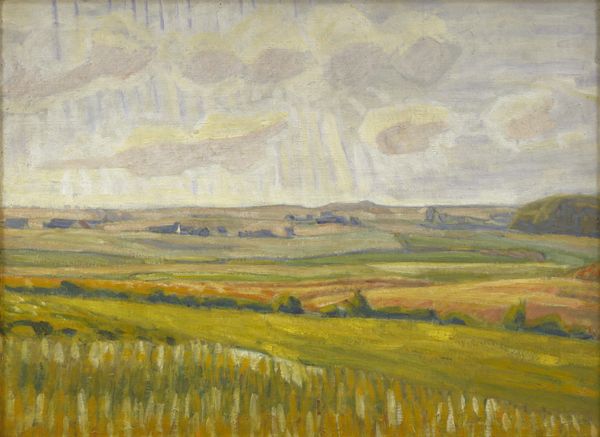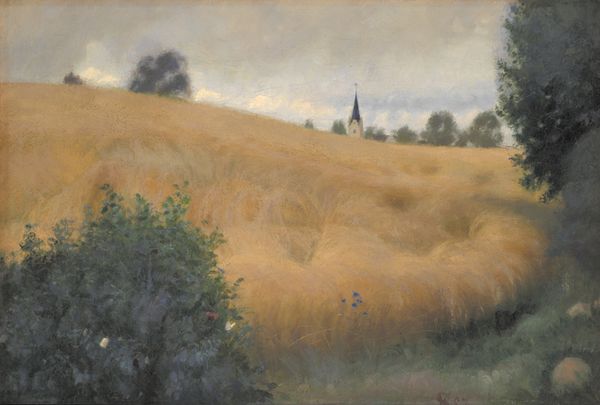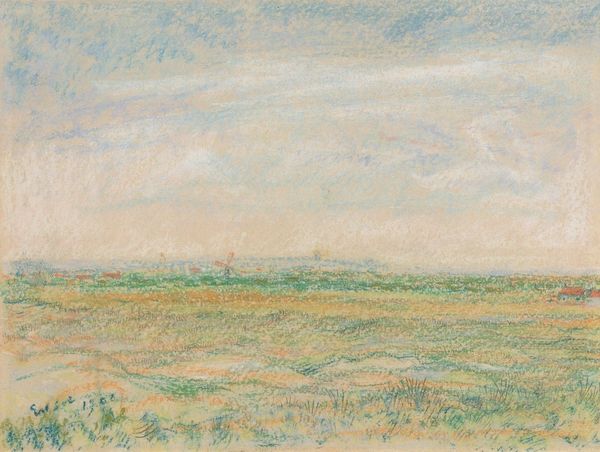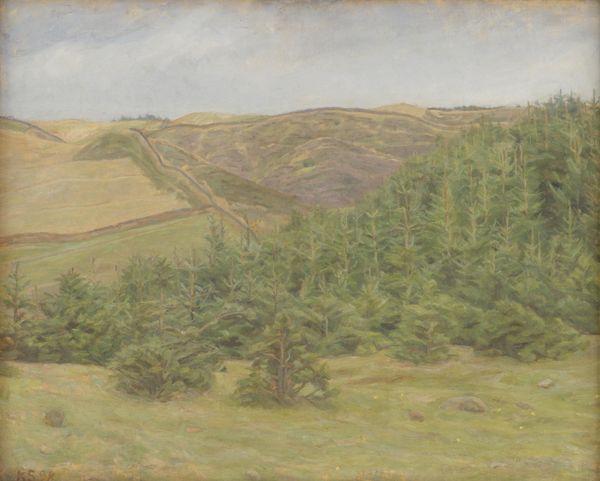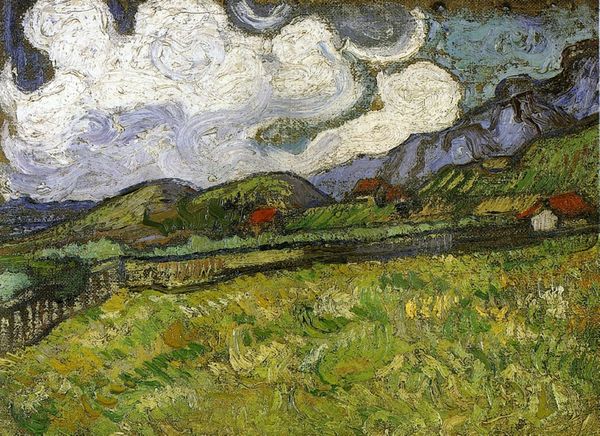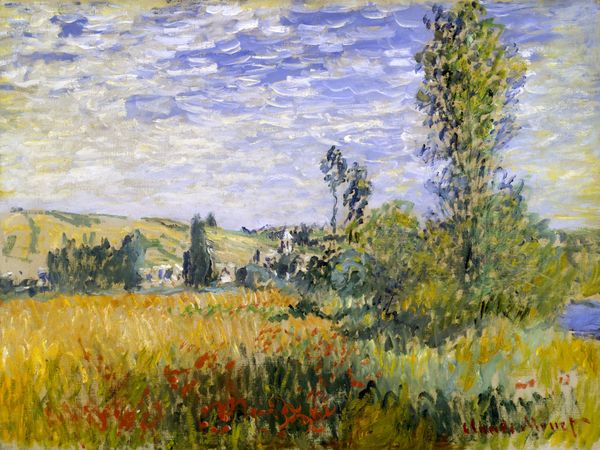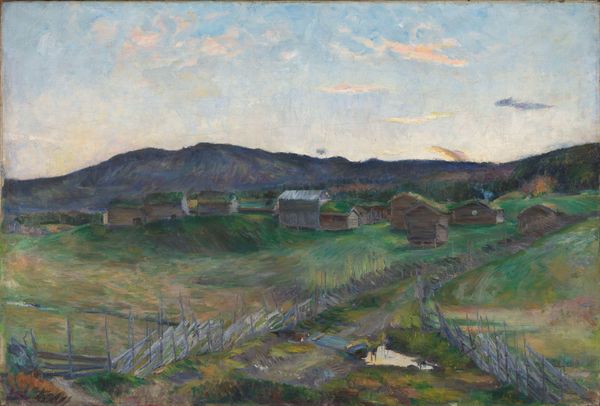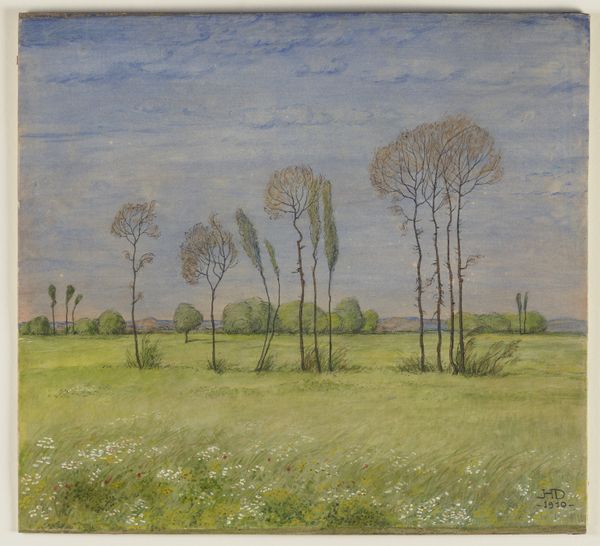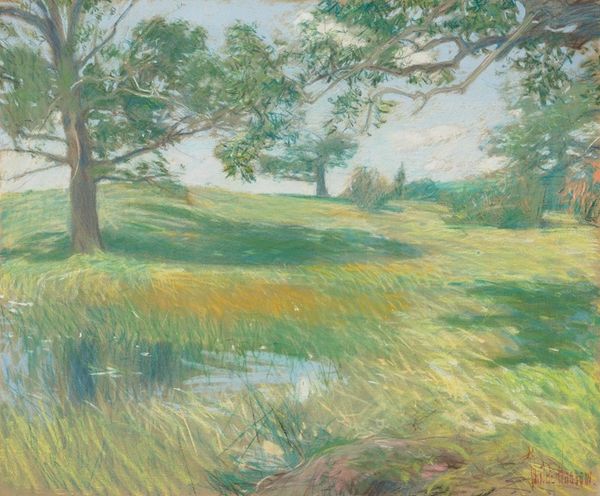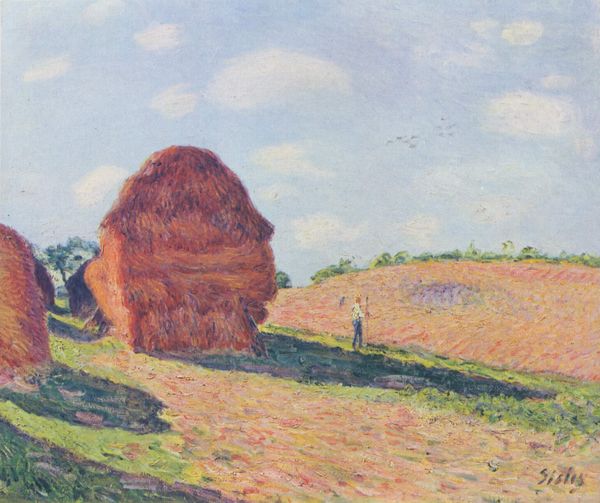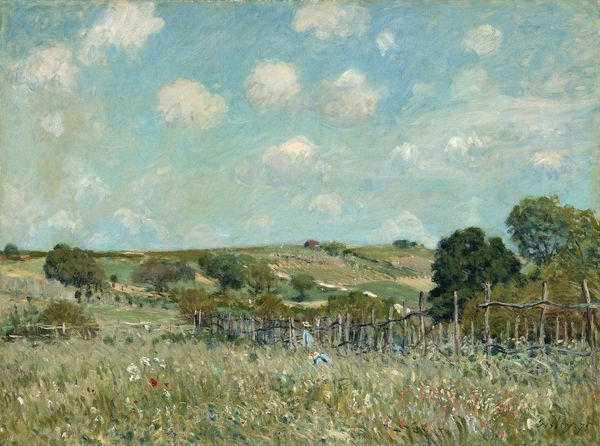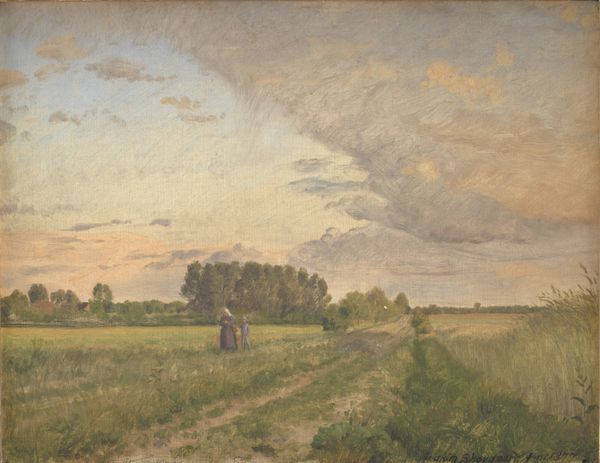
Dimensions: 85 cm (height) x 115.5 cm (width) (Netto), 102 cm (height) x 131 cm (width) x 9.4 cm (depth) (Brutto)
Curator: Here we have Peter Hansen's "A Field of Waving Rye," painted in 1894. The artist's handling of oil paint creates a shimmering effect across the landscape. What's your first take on this one? Editor: Immediately, it feels tranquil, almost sleepy. The soft colors and the gentle sway implied in the title suggest a quiet summer day. It’s vast yet somehow intimate. Curator: Absolutely. It's interesting to consider this painting in light of the Impressionist movement's focus on capturing fleeting moments. Hansen, however, doesn't entirely abandon a sense of realism. We see it particularly in the details of the rye itself and the way light hits the different parts of the field. We know Hansen painted en plein air, embracing that direct interaction with his subject and material. Editor: I'm thinking about the politics of landscape, though. It's never *just* a field, is it? Consider the ownership of the land, agricultural practices of the period. It’s easy to fall into romanticizing rural life, but what labor went into cultivating this rye? Who benefited from it? Curator: A critical point. And seeing that he produced this painting at the height of the Danish Golden Age, you wonder who this kind of art was made for, its relationship to the power structures of the day. Also, it must be remembered how materials become readily available, and to whom, and from which trade routes; so there is so much that we might fail to initially register on account of that kind of landscape imagery appearing as an innocuous backdrop today. Editor: Precisely. What strikes me is the choice to elevate what seems like a mundane subject—a rye field—to high art. It begs the question: what is worthy of representation? Hansen is challenging viewers’ expectations. Was this ever showcased at one of the major Salons? Curator: Evidence would have us believe so. In the late 19th Century there was growing demand and reception for art that would celebrate Danish national identity through simple landscape imagery. He had to work with the public’s understanding of landscape painting. Editor: Very true. So while at first glance this artwork seems quiet, simple, perhaps even purely aesthetic, digging beneath the surface reveals layers of meaning connected to labor, ownership, and the evolving concept of national pride in 19th-century Denmark. Curator: Precisely. "A Field of Waving Rye" offers so much for the eye and mind, a reminder that even the most unassuming scenes carry complex histories and social implications.
Comments
No comments
Be the first to comment and join the conversation on the ultimate creative platform.
